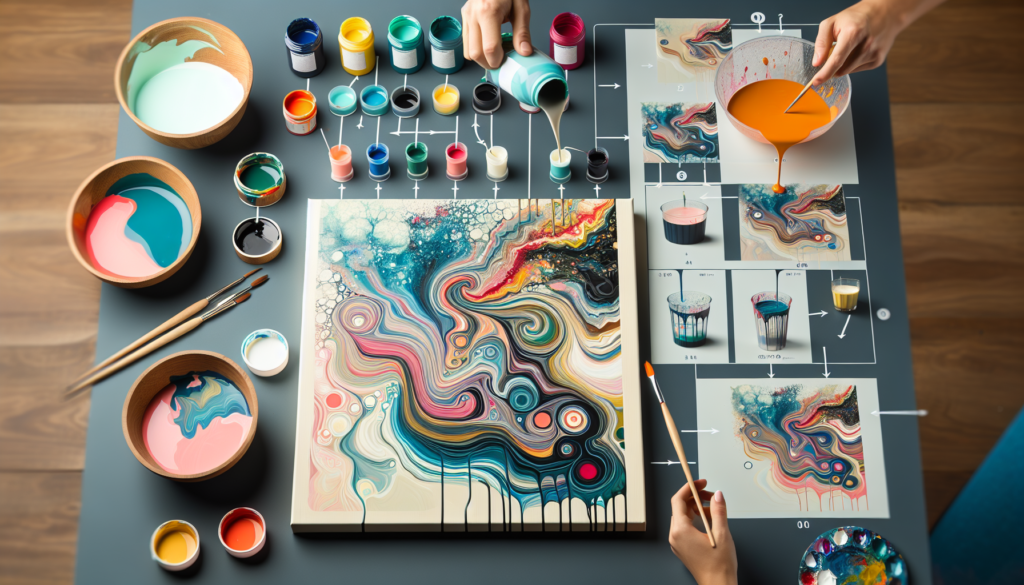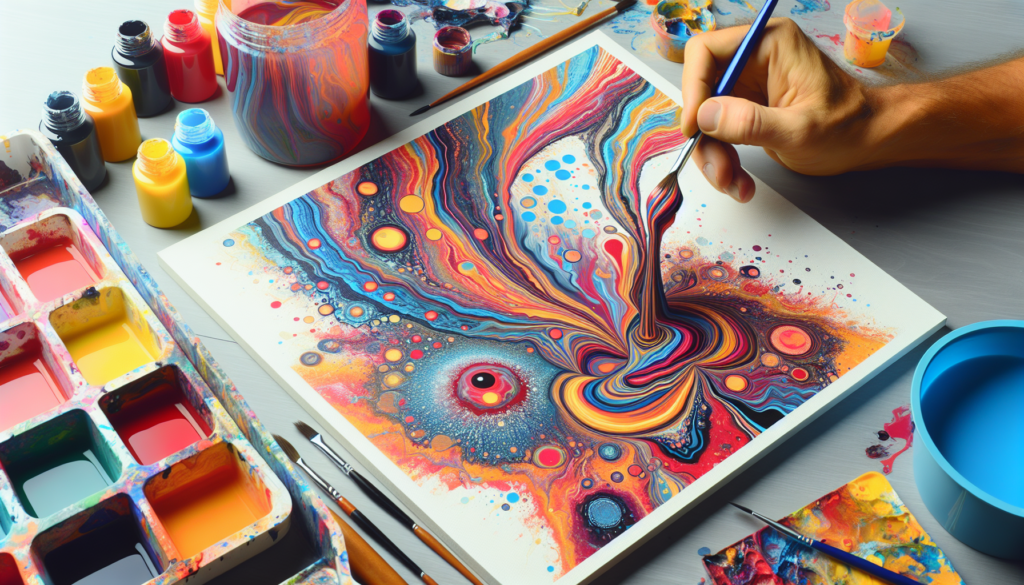Have you ever heard of a Dutch pour in acrylic painting? If not, get ready to be amazed! A Dutch pour is a popular pouring technique in acrylic painting that creates stunning and mesmerizing effects on the canvas. Unlike other pouring techniques, a Dutch pour involves pouring multiple colors of thinned acrylic paint onto the canvas and then tilting the canvas to create unique and intricate patterns. The result is a visually captivating artwork with beautiful color blending and organic shapes that are sure to leave you in awe. So, whether you’re an experienced artist or just starting out, the Dutch pour is definitely a technique you’ll want to try!
What Is A Dutch Pour In Acrylic Painting
Acrylic pouring is a popular technique among artists, and one of the most intriguing variations of this technique is the Dutch pour. The Dutch pour, also known as the Dutch flip cup, is a method of creating mesmerizing abstract patterns on canvas using acrylic paints. It involves pouring multiple colors onto a canvas in a cup, flipping the cup onto the canvas, and then manipulating the paint to create unique and stunning designs. If you’re eager to try out this technique and add a touch of magic to your artwork, read on to learn more about how to create a Dutch pour acrylic painting.

Preparing the Canvas
Before you begin your Dutch pour, it’s important to start with a properly prepared canvas. Ensure that the surface is clean and free from dust or debris. You can use a lint-free cloth or a brush to remove any particles that may affect the final outcome of your painting. It’s also advisable to prime your canvas with gesso to create a smooth and even surface for the paint to adhere to. This step is crucial as it helps prevent any unwanted reactions between the paint and the canvas.
Choosing Colors and Pouring Medium
The choice of colors is a vital aspect of creating a Dutch pour painting. Select colors that complement each other and evoke the desired mood or theme of your artwork. Opting for a combination of contrasting or analogous colors can create a visually striking piece. Experiment with different color combinations and observe how they interact with each other on the canvas. Additionally, consider using a pouring medium, which helps to thin the paint and enhance its flow. This medium allows the colors to blend seamlessly and creates beautiful marbling effects.
Mixing the Pouring Medium
To ensure the right consistency for your Dutch pour, you’ll need to mix the pouring medium with your acrylic paints. Pouring mediums are available in various brands and types, such as silicone or non-silicone-based. Follow the instructions provided by the manufacturer to mix the pouring medium with your paints. It’s crucial to maintain the correct ratio of pouring medium to paint to achieve the desired pouring consistency. The pouring medium helps the paint flow smoothly and evenly across the canvas.
Preparing the Paints
Once you have your pouring medium mixed, it’s time to prepare your paints. Pour each color of paint into separate cups or containers, ensuring you have enough paint to cover your canvas adequately. Consider using a variety of hues and shades to add depth and dimension to your artwork. You can also experiment with metallic or iridescent paints for a touch of shimmer. Stir each paint thoroughly to ensure it’s free of any clumps or bubbles, ensuring a smooth and consistent application.

Creating the Pouring Mixture
Now that you have your paints ready, it’s time to create the pouring mixture. Start by adding a small amount of pouring medium to each cup of paint. The amount you add will depend on how thin or thick you want your paint to be. Keep in mind that the pouring medium will further thin the paint, so begin with a small amount and gradually add more if needed. Mix the pouring medium and paint together until you achieve a smooth and runny consistency. The paint should flow off a stirring stick in a continuous stream without breaking.
Applying the Pouring Mixture
With your pouring mixture prepared, it’s time to apply it to the canvas. Place the canvas on a level surface, ensuring it’s secure and won’t move during the pouring process. To create a Dutch pour, you can either pour different colors directly onto the canvas or layer the colors in a cup before flipping it. Both methods create unique and stunning patterns, so choose whichever technique appeals to you the most. As you pour the paint, experiment with different pouring heights and angles to achieve different effects.
Manipulating the Paint
After pouring the paint onto the canvas, it’s time to manipulate it to create mesmerizing patterns. Tilt the canvas gently in different directions, allowing the paint to flow and spread naturally. This movement helps the colors blend and create beautiful marbling effects. You can also use tools such as palette knives or brushes to guide the paint and create additional texture or movement. Be creative and experiment with different techniques to create the desired effect on your canvas.
Removing Excess Paint
Once you’re satisfied with the patterns and design on your canvas, it’s essential to remove any excess paint. Carefully lift and tilt the canvas to allow the excess paint to drip off the edges. Use a clean and dry brush or cloth to remove any drips or pooling paint on the sides. This step helps create clean edges and prevents the paint from running or smearing as the artwork dries.
Finishing Touches
To add some final touches to your Dutch pour painting, you can sprinkle or splatter additional paint on the canvas. This technique adds depth and interest to your artwork and can help tie the composition together. You can also use a palette knife or a brush to create intricate details or textures if desired. Be mindful not to overdo it, as it’s essential to maintain the balance and harmony of the piece.
Drying and Varnishing
Allow your Dutch pour painting to dry completely before applying any varnish or protective coating. The drying time can vary depending on the thickness of the paint and the environmental conditions. It’s advisable to place your artwork in a well-ventilated area away from direct sunlight to ensure even drying. Once dry, you can apply a varnish to protect your artwork from dust, fading, or yellowing. Choose a varnish specifically designed for acrylic paintings and follow the instructions provided.
In conclusion, the Dutch pour technique in acrylic painting offers artists a unique and captivating way to create abstract art. By following the steps outlined above, you can dive into this mesmerizing world of fluid acrylics and unleash your creativity. Remember to enjoy the process, embrace experimentation, and let the paint guide you in creating stunning Dutch pour paintings.